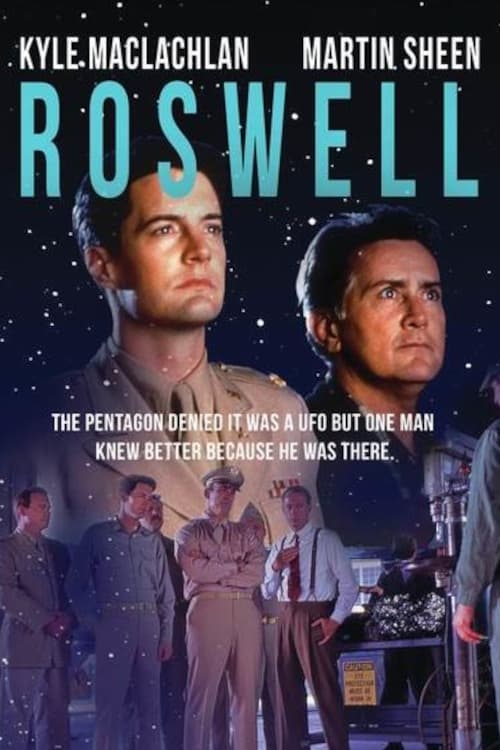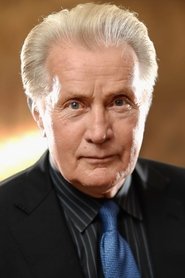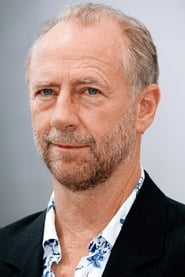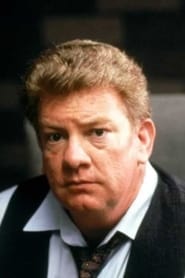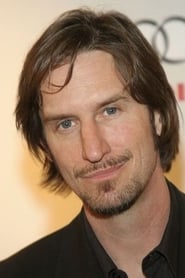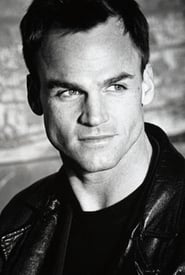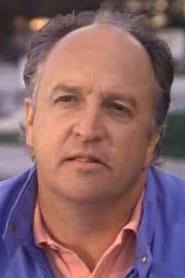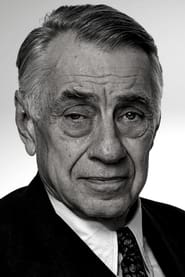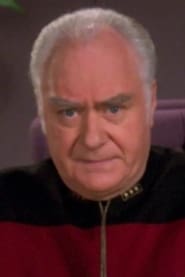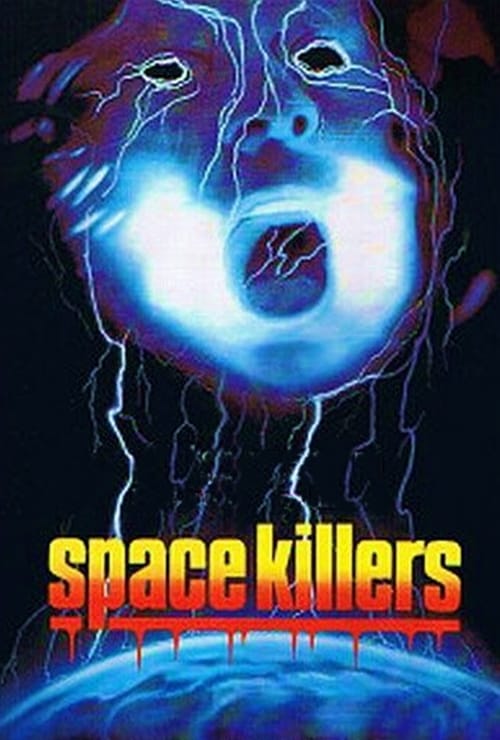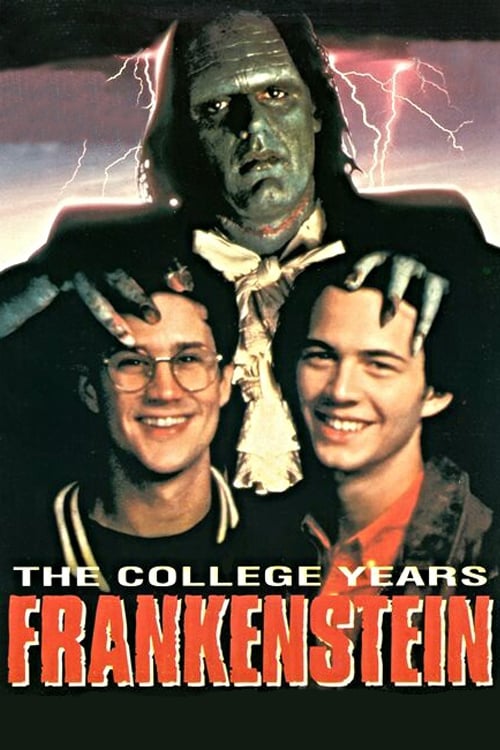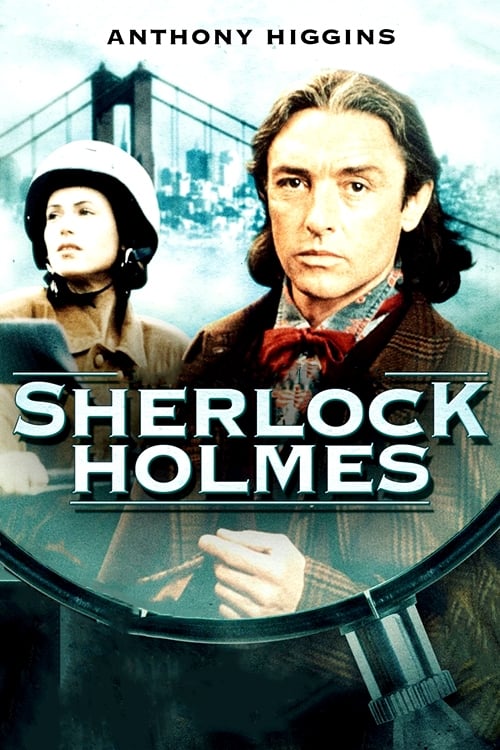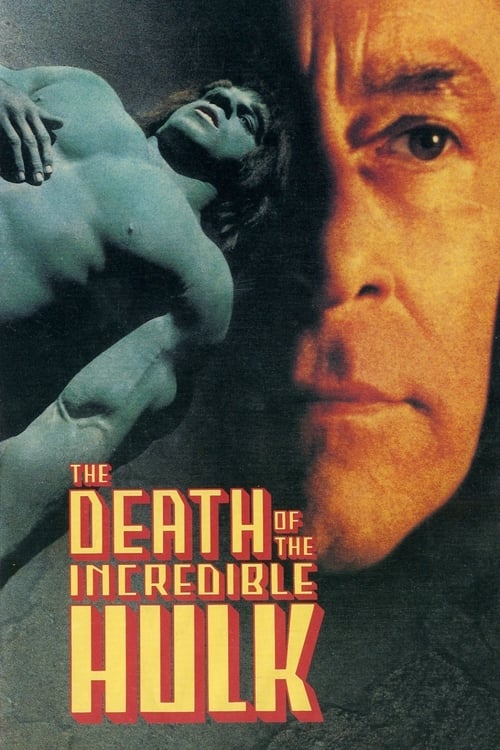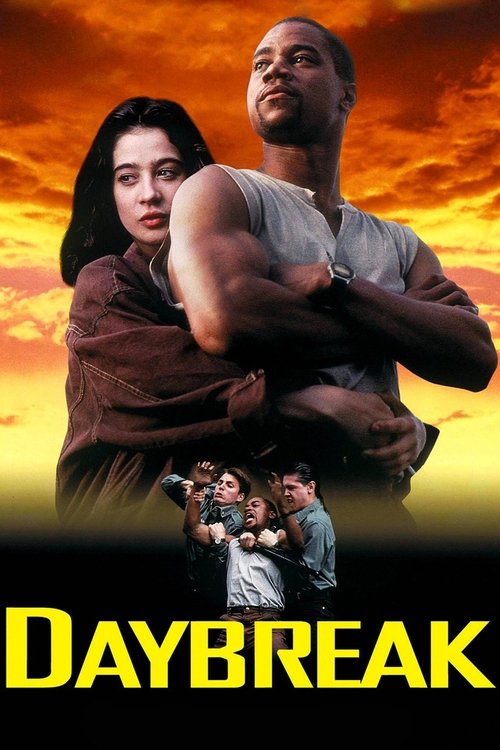
Ask Your Own Question
What is the plot?
The story of Roswell (1994) opens in 1977, at a reunion of the 509th Bomb Wing of the 8th USAAF, a military nuclear bomb unit. Major Jesse Marcel, now retired and played by Kyle MacLachlan, arrives at the reunion with a quiet but intense demeanor. The atmosphere is thick with nostalgia and unspoken tension. Marcel's mind drifts back thirty years to July 1947, when everything changed for him. The reunion setting is a crucible of skepticism and buried truths, as Marcel faces derision from his fellow veterans who dismiss his insistence that something extraordinary happened near Roswell, New Mexico.
The film cuts back to the summer of 1947, to the Mac Brazel ranch just outside Roswell. Marcel, then a Major in the US Army Air Force, is dispatched to investigate reports of strange debris scattered across the ranch. The sun beats down on the arid New Mexico landscape as Marcel and his team carefully sift through the wreckage. The debris is unlike anything Marcel has ever seen--thin, metallic strips that are impossibly light yet incredibly strong, with strange hieroglyphic-like markings etched into them. The materials defy explanation; they do not resemble any known aircraft components. Marcel's eyes widen as he pieces together the fragments, a growing conviction forming that this is no ordinary crash.
Marcel reports his findings to Colonel Blanchard, his commanding officer at Roswell Air Force Base. Blanchard shares Marcel's astonishment, and together they prepare a press release announcing the recovery of a "flying saucer." The news spreads rapidly, capturing the imagination of the public and the media. The military base buzzes with activity, but the excitement is short-lived. The next day, General Roger Ramey arrives from Washington, D.C., bringing with him a chilling order: the debris is to be identified publicly as a weather balloon, and any mention of a "flying saucer" must be retracted.
In a tense scene at the Roswell Air Force Base headquarters, General Ramey confronts Marcel and Blanchard. His voice is cold, authoritative: "You will tell the press the debris is from a weather balloon. No exceptions." Marcel's face tightens with frustration and disbelief, but he knows resistance is futile. He is forced to appear before reporters, holding what he must now call "balloon debris," a humiliation that gnaws at him deeply. The press conference is a farce, and Marcel's colleagues mock him behind his back, branding him a fool for believing in something so outlandish.
Back in 1977, at the reunion, Marcel's resolve remains unbroken despite the scorn. He quietly gathers information from other veterans, piecing together their memories and accounts, which sometimes conflict but collectively deepen the mystery. The reunion becomes a crucible for buried secrets and half-truths. Marcel meets Townsend, a mysterious figure whose presence unsettles him. Townsend challenges Marcel's beliefs, pushing him to reconsider what he thought he knew. Their rapid-fire dialogue crackles with tension:
Townsend: "You think you've got it all figured out, Marcel? Truth isn't always what it seems."
Marcel: "I was there. I saw the debris. I know what I found."
Townsend: "And yet, you're still chasing shadows."
As Marcel wrestles with Townsend's words, the film intersperses flashbacks that reveal more about the cover-up and the layers of deception. The military's official narrative is shown to be a carefully constructed façade, designed to suppress the truth at all costs. Marcel's internal conflict intensifies--his duty to the military clashes with his conscience and the evidence before him.
Throughout the film, no characters die. The tension is psychological and ideological rather than physical. The confrontations are battles of wills, words, and beliefs. Marcel is humiliated and isolated but never broken. Colonel Blanchard remains a steadfast ally, sharing Marcel's doubts but bound by military discipline. General Ramey embodies the cold machinery of the cover-up, enforcing silence with ruthless efficiency.
The climax unfolds at the reunion's final moments. Marcel confronts Townsend in a dimly lit room, their conversation a crescendo of revelation and doubt. Townsend reveals new insights that shake Marcel's certainty but do not extinguish his belief in the extraterrestrial nature of the crash. The dialogue is rapid and intense, the emotional stakes high. Marcel's voice is weary but resolute: "I don't know what the truth is anymore, but I know what I saw."
The film closes on an ambiguous note. Marcel walks away from the reunion, the desert night stretching out before him, a symbol of the vast unknown. The mystery of Roswell remains unresolved, a puzzle with missing pieces. Marcel's conviction endures, but so does the shadow of doubt. The final image is of the scattered debris, glinting faintly under the moonlight, a silent testament to a secret that refuses to die.
In Roswell (1994), the story is less about definitive answers and more about the human struggle to confront and understand the extraordinary. It is a tale of discovery, denial, and the enduring quest for truth, told through the eyes of Major Jesse Marcel, who carries the burden of knowledge that challenges the very fabric of reality.
More Movies Like This
Browse All Movies →What is the ending?
In the ending of the movie "Roswell," the story culminates with the revelation of the truth behind the alleged alien crash in Roswell, New Mexico, in 1947. The film concludes with a sense of unresolved mystery, as the characters grapple with the implications of their experiences and the secrets that remain hidden.
As the narrative unfolds, we see the characters, particularly Jesse Marcel, who is deeply affected by the events surrounding the crash. He struggles with the burden of knowledge and the impact it has on his life and relationships. The film ends with a poignant reflection on the nature of truth and the lengths to which the government will go to conceal it.
Now, let's delve into the ending in a more detailed, chronological manner:
The final scenes of "Roswell" begin with Jesse Marcel, portrayed as a conflicted and weary man, sitting in his home, haunted by the memories of the events that transpired in 1947. He is surrounded by the remnants of his life, but his mind is consumed by the truth he knows about the alien crash. The weight of his experiences is palpable; he feels isolated, burdened by the knowledge that he cannot share with others.
As the narrative shifts, we see flashbacks of the crash site, where Jesse and his fellow military personnel discovered the wreckage. The imagery is stark, with the debris scattered across the desert landscape, glinting under the harsh sun. The tension of that moment is etched into Jesse's memory, and we witness his internal struggle as he recalls the excitement and fear that accompanied the discovery of what he believed to be extraterrestrial technology.
In the present, Jesse is approached by a journalist who is eager to uncover the truth about the Roswell incident. This interaction reignites Jesse's desire to reveal what he knows, but he is also acutely aware of the risks involved. The journalist's enthusiasm contrasts sharply with Jesse's cautious demeanor, highlighting the generational divide in their approaches to truth and secrecy.
As the film progresses, we see Jesse's relationships with his family strained by his obsession with the past. His wife, who has been supportive, begins to feel the emotional toll that Jesse's fixation is taking on their marriage. The tension in their home is palpable, and Jesse's internal conflict is mirrored in the growing distance between him and his loved ones.
In the climactic moments, Jesse decides to confront the military officials who have kept the truth hidden for decades. He attends a meeting where he faces off against those who have perpetuated the cover-up. The atmosphere is charged with tension as Jesse demands answers, his voice trembling with a mix of anger and desperation. The officials, however, remain evasive, and the confrontation leaves Jesse feeling more isolated than ever.
The film concludes with Jesse reflecting on the nature of truth and the sacrifices made in the name of secrecy. He stands alone, looking out over the desert, a symbol of the vast unknown that lies beyond human understanding. The final shot lingers on his face, capturing the complexity of his emotions--regret, determination, and a lingering hope that one day, the truth will be revealed.
As the credits roll, we are left with the fates of the main characters hanging in the balance. Jesse Marcel remains a man divided, caught between the desire for truth and the reality of his circumstances. His wife, while supportive, is left to navigate the emotional fallout of his obsession. The government officials continue their silence, embodying the ongoing conflict between secrecy and revelation. The unresolved nature of the ending serves as a reminder of the enduring mysteries that surround the Roswell incident and the personal toll it has taken on those involved.
Is there a post-credit scene?
The movie "Roswell," produced in 1994, does not have a post-credit scene. The film concludes its narrative without any additional scenes or content after the credits roll. The story wraps up with a focus on the events surrounding the alleged UFO crash in Roswell, New Mexico, in 1947, and the subsequent government cover-up, leaving viewers with a sense of intrigue and contemplation about the mysteries of the incident.
What role does the character of Jesse Marcel play in the story of Roswell?
Jesse Marcel is a key character in the film, portrayed as a military officer who becomes embroiled in the Roswell incident. He is depicted as a man torn between his duty to the military and his growing doubts about the official narrative surrounding the crash. His internal conflict is palpable as he grapples with the implications of what he has witnessed and the pressure to conform to the government's version of events.
How does the film depict the relationship between the military and the townspeople of Roswell?
The film illustrates a tense relationship between the military and the residents of Roswell. As the military arrives to investigate the crash, the townspeople are shown to be both curious and fearful. The military's secretive actions create a sense of mistrust, particularly as local citizens, including Marcel, begin to question the truth behind the incident. This dynamic heightens the emotional stakes for characters who feel caught between their loyalty to their community and the authority of the military.
What evidence does Jesse Marcel find that leads him to doubt the official explanation of the crash?
Jesse Marcel discovers unusual debris at the crash site, which includes strange materials that do not resemble any known aircraft. The film portrays his shock and confusion as he examines the wreckage, noting its lightweight and unidentifiable properties. This evidence fuels his internal struggle, as he begins to suspect that the truth is being hidden from the public, leading him to question the military's narrative.
How does the character of Major Marcel's son, Jesse Marcel Jr., contribute to the story?
Jesse Marcel Jr. serves as a poignant emotional anchor in the film, representing the innocence of youth caught in the turmoil of the Roswell incident. His interactions with his father reveal the personal impact of the events on their family. The film depicts his curiosity and fear as he learns about the crash, and his father's attempts to shield him from the harsh realities of the situation. This father-son dynamic adds depth to the narrative, highlighting the generational divide in understanding the truth.
What is the significance of the alien bodies in the film, and how are they portrayed?
The alien bodies in the film are portrayed as a shocking revelation that heightens the mystery of the Roswell incident. When Jesse Marcel and other military personnel encounter the bodies, the film captures their horror and disbelief. The depiction of the bodies is both eerie and tragic, emphasizing the fear of the unknown and the ethical dilemmas faced by those who must decide how to handle such a discovery. This moment serves as a turning point for Marcel, deepening his internal conflict and commitment to uncovering the truth.
Is this family friendly?
The movie "Roswell," produced in 1994, is a dramatization of the alleged UFO incident in Roswell, New Mexico, in 1947. While it is not overtly graphic or violent, there are several elements that may be considered objectionable or upsetting for children or sensitive viewers:
-
Depictions of Grief and Loss: The film explores themes of loss, particularly through the experiences of families affected by the events surrounding the alleged crash. This may evoke strong emotions.
-
Government Conspiracy: The portrayal of government secrecy and cover-ups can be unsettling, especially for younger viewers who may not fully understand the implications of such themes.
-
Alien Encounters: There are scenes depicting the aftermath of the alleged alien crash, including the examination of bodies and the suggestion of extraterrestrial beings. These may be frightening or disturbing for some viewers.
-
Emotional Turmoil: Characters experience significant emotional distress, including fear, confusion, and anxiety, which may resonate deeply with sensitive audiences.
-
Tension and Suspense: The film contains moments of tension and suspense that could be intense for younger viewers, particularly during scenes involving military personnel and investigations.
Overall, while "Roswell" is not explicitly inappropriate, its themes and emotional weight may require parental discretion for younger audiences.

